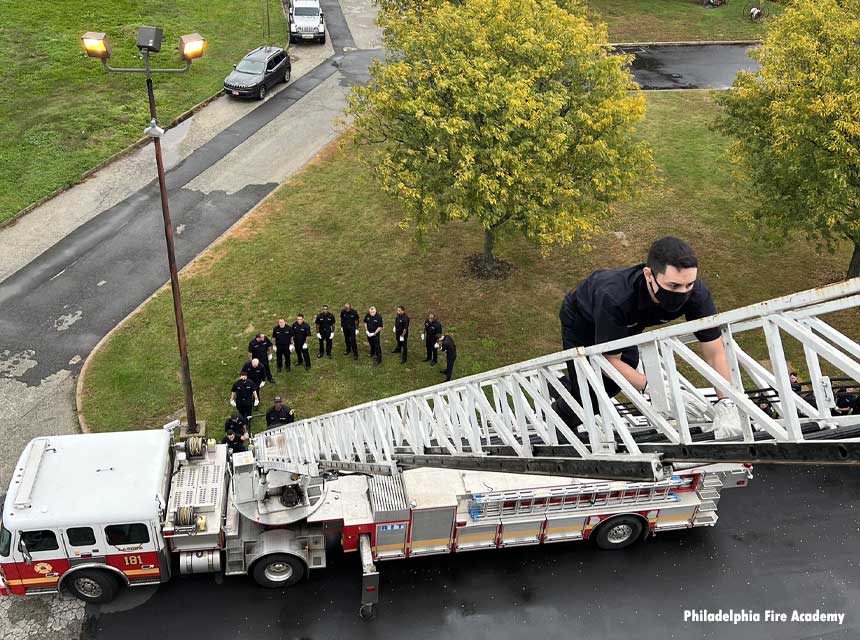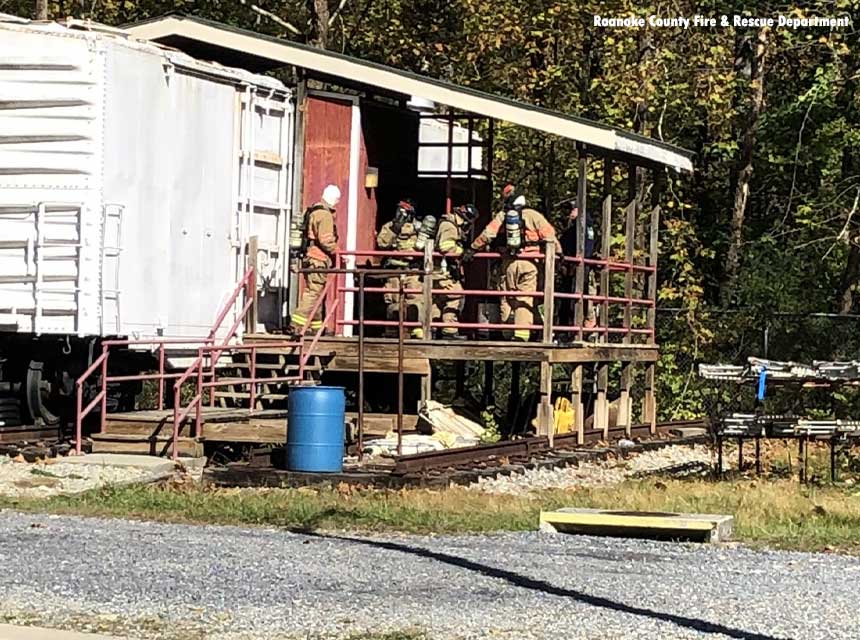Some Initial Training Topics Recruit Firefighters May Encounter

In the previous installment of Fire Service 101, we covered the purpose of a fire academy, what the very first days look like, and the pivotal role physical training (PT) plays in teambuilding and resiliency. Since most academies last four to seven months, there is a great deal more to discuss so let’s get right to it!
Personal Protective Equipment (PPE)
There are many pieces of equipment students are issued in the fire academy in order to keep them safe. These items are “turnout gear,” which is the structural firefighting coat and pants, fire boots, a flash hood, structural firefighting gloves, work gloves, eye protection, ear protection, and a structural firefighting helmet. Every one of these items needs to fit well and must be used properly to protect the student from the dangers present in the training environment. These are the same dangers present after graduation when work begins in the field. For example, in a portion of the academy called “live burn training,” students extinguish fire inside a structure. All parts of the body must be covered with PPE so that nothing gets burned. Students must also use proper PPE while learning skills with equipment like chainsaws and rotary saws. Full PPE is required during these evolutions to protect students from cuts, flying debris, and noise-induced hearing loss.
Live Fire Training Is Worth It: Real Training for Firefighters
Much of the academy is spent in activities that are very physically demanding but do not involve live fire. The PPE gets dirty and sweaty; it can even get tears. Many academies save the good gear that fits well and has no tears for when students participate in live burns. This means that most of the academy is spent in a coat and pants that fit, but are out of date and no longer meet safety requirements for fire protection. This gear still fully protects the student during non-fire evolutions. Just a warning…turnout gear gets stinky! Most of the gear is put in one room to dry out overnight and the room gets quite ripe as well.

Self-Contained Breathing Apparatus (SCBA)
The SCBA and the face piece or “mask” are two of the most important pieces of equipment firefighters use. They supply compressed air for the firefighter to breathe while working in an Immediately Dangerous to Life and Health (IDLH) environment. They are often introduced early on in the fire academy so students can learn how to use these vital tools individually and with their company members. We will go into these complicated pieces of equipment in more detail in a future article. Right now, know that in the academy, students are expected to learn how they operate, how to change the batteries, how to clean them, how to change the air cylinders, and how to wear them. Students discover two important personal truths during the introduction to SCBA and face pieces:
- The SCBA are heavier than they expected them to be—especially after they are worn for a substantial amount of time over turnout gear.
- The face pieces either do or do not cause an extreme claustrophobic response—some feelings of panic or anxiety at the beginning are normal.
Due to the weight of the SCBA and the claustrophobic feeling all of the PPE can cause once the face piece is put on, the fire academy can end for some students in this module. They are unable to conquer the anxiety and stress encountered in the scenarios. That’s okay. This job is not for everyone. However, if extreme claustrophobia is a known issue and firefighting is a life goal, it would be beneficial to work on learning how to conquer the phobic wave brought on by small spaces or wearing masks prior to the beginning of the academy.
Throw Back to Basics: SCBA Check | SCBA Confidence
Two-Minute Drills
Two-minute drills begin to happen in the academy once both PPE and SCBA are introduced. A two-minute drill is a timed evolution where the student must put on their coat, pants, boots, gloves, flash hood, face piece, helmet, and SCBA in two minutes. Everything must be snapped and zipped properly. All skin must be covered and the student must be breathing through the SCBA. This is called being “on air.” These drills are often performed with the whole class together in formation. For example, if there are 24 people in the class, there could be six rows of four. It is a requirement in many states for students to be able to accomplish this skill by the end of the academy. It is also a fun bit of competition between companies and individuals to see who can do it the fastest. Many students can get it done in well under two minutes after a week or two of practice. This is a skill that may seem too repetitive and boring; however, what it is doing is creating muscle memory of how to put everything on correctly and quickly without thinking too much about it.
Is There Any Benefit to the Traditional Timed Donning Drill?
PPE Drills: Donning Quickly and Properly
Ladders
The first few weeks of the academy will also include modules on ladders. Students may think they already know about ladders, but unless they have worked construction or worked in a ladder factory, they do not. The fire service uses many different types of ladders: attic, roof, and extension to name a few. There are different ways to put them up against buildings—we call this “throwing” ladders—and there are different ways to climb them. Cleaning them, however, is another story. There is only one way to do it: “according to the manufacturer’s instructions.” Students become very familiar with this phrase as it is how everything in the fire service is supposed to be cleaned. The hands-on evolutions for this module are extensive and require teamwork and excellent communication. Students work together in their companies to perform the skills needed to pass the practical tests.
Tactical Operational Tips in Laddering
Firefighting Basics: Ladder Tips
Aerial Ladders: How Strong Is Your Ladder Game?
Another type of ladder students may see in an academy is an aerial ladder. They are the large ladders attached to the tops of fire trucks. They can be extended to around 100 feet in the air and raised from moderate to steep inclines. These ladders are used to reach the tops of buildings or to access windows on upper floors. Students may have the opportunity to climb one of them either for fun or as a test. Some academies like to be sure each student can maneuver up and down the extended aerial ladder, with or without full PPE, to ensure that extreme fear of heights, acrophobia, is not an issue for the student. Like many things in the fire department, firefighters do not climb high ladders every day, but they do it at some point. Lives may depend on their ability to maneuver at heights. Again, it does not matter if students feel fear while learning skills like climbing the aerial ladder. Fear is a healthy response to a perceived dangerous situation. What is important is the ability to push through the phobic wave, train, and perform well in the face of those feelings.
This article covered PPE, SCBA, the infamous two-minute drill, and ladders. It also touched on how phobias and a phenomenon called the “phobic wave” can affect performance. Our next article will explore the modules fire academies may include such as confined space, vehicle extrication, and live burns. See you next month!

Mandy George is a retired lieutenant in the Chesapeake (VA) Fire Department. She has a master’s degree in emergency and disaster management, a master’s degree in professional writing, and an associate’s degree in emergency medical services. She is also a Nationally Registered Paramedic (NRP) and a Virginia Office of Emergency Medical Services (VAOEMS) Education Coordinator.
FIRE SERVICE 101
Introduction to the Fire Academy
Yes, You Can Get a Firefighter Job with No ‘Experience’

